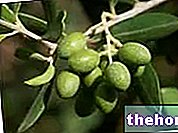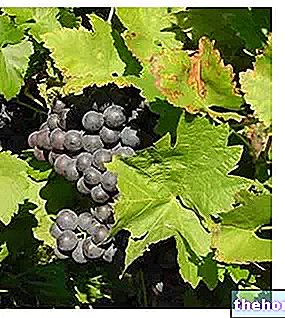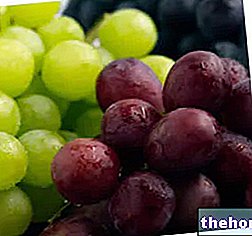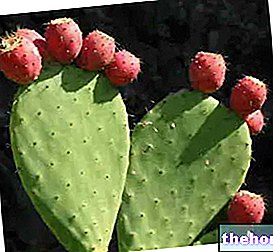What are
Hazelnuts are indehiscent fruits (achenes with woody pericarp), partially wrapped in a green leafy envelope that detaches when ripe.

There are several varieties of hazelnuts. In Italy, the most famous are certainly those of the Langhe (Tonda Gentile), but lately the Sicilian Nostrali are also distinguished. Other cultivars are the Tonda di Giffoni, the Tonda Gentile Romana, the Camponica and the Mortarella di S. Giovanni.
The hazel is a tree that reaches 5-7m in height, with heart-shaped leaves and jagged profile; it grows spontaneously in the woods with a mild climate and often naturally forms real scrub patches (similar to plantations), also known as "hazel groves". Under the hazelnut trees it is possible to find some mushrooms, such as the red porcinello, the berbesin and (underground) the black truffle.
The soil suitable for the development of hazelnuts is draining, fertile and deep. The hazelnut coexists very well with oaks, beeches, ash trees, maples and some poplars.
The origins of hazelnuts are European and Caucasian. In Italy, the hazelnut colonizes in part the plains, a good surface of the Apennine hill ridges (up to the Sicilian Nebrodi) and is not lacking in proximity to the Alpine average altitudes. It is widely cultivated in Spain, France, Turkey and Italy (especially in Piedmont and Lazio).
Nutritional Properties
Hazelnuts are oil seeds, therefore particularly rich in fats; their use is heterogeneous but, among the various ones, there is also the production of an alternative oil to the extra virgin olive oil (see the article: hazelnut oil).
The gastronomic uses of these fruits are very numerous and it is not at all easy to mention them all. In addition to being consumed alone, hazelnuts are used for the production of sugared almonds, nougat, chocolate, ice cream and various sweets, but also "health" foods such as muesli. Hazelnuts, as "dried fruit" (or rather, oil seeds), are widely used in dietary regimes: Macrobiotic, Zone Diet and Paleolithic Diet.
Due to the moderate protein content (taking into account that it is a vegetable food), hazelnuts are a valid substitute for plastic foods of animal origin; obviously, neither the quantity nor the biological value are vaguely comparable to those, for example, of meat. In any case, the possibility of associating several vegetable protein sources, if well considered, ensures the coverage of the essential amino acid needs even through a vegan diet.
Hazelnuts can be used to complete the lipid supply of the diet; it may seem strange, but some diets require alternative lipid sources to oil to reach even only 25-30% of total calories. In that case, hazelnuts are a great solution.

Nutritional values (per 100 g of edible portion)
The breakdown of fatty acids is beneficial for the metabolism of lipids. To tell the truth, hazelnuts do not contain large quantities of essential molecules (omega 3 and omega 6); however, the intake of omega 9 (oleic acid) is more than satisfactory, all to the advantage of cholesterolemia.
Also noteworthy is the concentration of dietary fibers, important for preventing constipation, but also for reducing the risk of colon cancer, feeding the symbiotic intestinal bacterial flora and modulating the absorption of nutrients.
The nutritional importance of hazelnuts is also attributable to the high content of vitamins (vitamin E, B6, folate and thiamine) and mineral salts (copper, iron, manganese and calcium). If taken in small doses they have antioxidant, restorative, hypoglycemic and hypocholesterolemic properties (they are a good source of plant sterols).
In any case, given their high caloric intake, hazelnuts should be consumed in moderation (10-20 grams are more than enough), possibly away from main meals, perhaps associating them with a pulpy fruit (kiwi, banana, apple, etc.).
Hazelnuts are particularly suitable for the diet of hypercholesterolemic subjects, by virtue of the positive effects of omega 9 and phytosterols. They are not contraindicated in case of type 2 diabetes mellitus, hypertension, hyperuricemia and hypertriglyceridemia. However, it is good to keep in mind that very often these metabolic pathologies derive primarily from a condition of obesity; therefore, since hazelnuts are extremely energetic, it is always good to take them with a certain moderation.
ATTENTION! Hazelnuts are potentially allergenic foods, which is why they should also be excluded from the diet of the nurse and that of the infant.
Notes on "Hazelnut Oil
The hazelnut oil, obtained by squeezing the seeds, is mainly intended for the cosmetic industry, where it is used for its precious antioxidant, emollient and toning properties (it is especially suitable for very dry and dehydrated skin).
In the past, hazelnut oil made headlines for the discovery of a turnover of several million euros, based on its illicit addition to the finest extra virgin olive oil.
See also: use of hazelnuts in herbal medicine
Production of Hazelnuts
The hazelnuts are harvested in autumn, when the fruit reaches full ripeness and the shell shrivels, detaching easily. Cleaning and drying operations follow, necessary for the prolonged preservation of the food. The reduction of humidity in fact decreases the rancidity of the fats and prolongs their shelf life, even if any exposure to excessive temperatures could have the opposite effect.
Once purchased, the hazelnuts in their shells must be stored in a cool, dry place at room temperature (about 20 ° C) for no more than a couple of months.
The production of shelled hazelnuts also involves the low temperature roasting of the fruit, necessarily without the shell. To preserve the organoleptic characteristics and avoid the degradation of the hazelnuts, the packaging takes place in well-sealed containers. Once opened, the hazelnuts should be stored in a cool and dry place, possibly in a closed jar and away from sunlight and heat sources. Also in this case, the deterioration is rather rapid and the product should be consumed within a very short time.
Video Recipes With Hazelnuts
Even if it is improper to talk about light recipes when using hazelnuts in the kitchen, avoiding the addition of butter can certainly improve the lipid profile of the food (see hazelnut cake without butter); the use of protein powder can instead make the classic hazelnut ice cream a more suitable alternative for athletes, while the high percentage of hazelnuts in the spreadable chocolate avoids the addition of hydrogenated tropical oils and fats, often abundant in products cheaper.
Stuffed Hazelnut Cake - Without Butter and Oil
Problems with playing the video? Reload the video from youtube.
- Go to the Video Page
- Go to the Video Recipes Section
- Watch the video on youtube
Other Foods - Nuts Cashews Peanuts Peanut Butter Chestnut Flour Almond Flour Hazelnut Flour Walnut Flour Dehydrated and Candied Fruit Dried Fruit Almond Milk Hazelnut Flour Almonds Hazelnuts Walnuts Macadamia Nuts Pecans Pine Nuts Pistachios Hemp Seeds Sunflower Seeds of Poppy OTHER ARTICLES DRIED FRUITS Categories Food Alcoholics Meat Cereals and derivatives Sweeteners Sweets Offal Fruit Dried fruit Milk and derivatives Legumes Oils and fats Fish and fishery products Salami Spices Vegetables Health recipes Appetizers Bread, Pizza and Brioche First courses Second courses Vegetables and Salads Sweets and desserts Ice creams and sorbets Syrups, liqueurs and grappas Basic preparations ---- In the kitchen with leftovers Carnival recipes Christmas recipes Light diet recipes Diabetic Recipes for the Holidays Ric Valentine's Day Recipes for Vegetarians Protein Recipes Regional Recipes Vegan Recipes




























